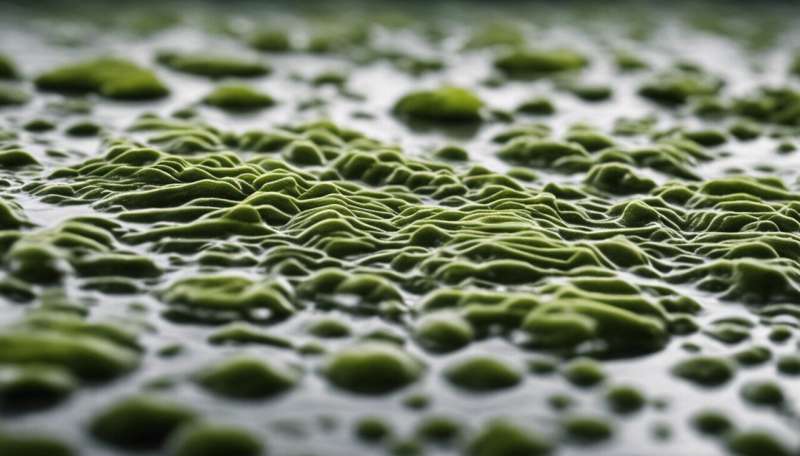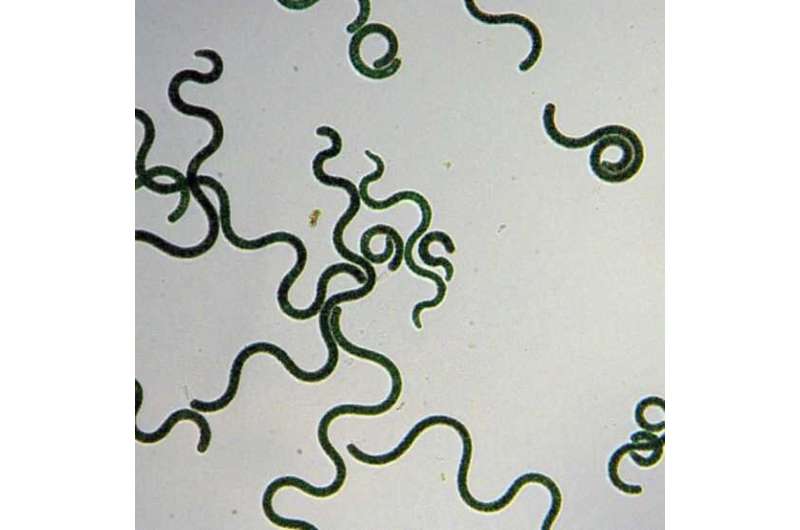Insects, algae still far from being favorite foods in Europe

Algae and insects are rich sources of protein for humans and livestock alike. Getting them on restaurant menus and into animal diet formulations still requires a lot of work—but it's worth the effort.
"There's no doubt that the idea of using insects as food in Europe has caused some hype. But we need to be careful not to exaggerate the benefits of this solution over other options," says Alexander Mathys. Perhaps a surprising comment coming from an insect researcher, but this ETH Professor of Sustainable Food Processing has clearly done his homework.
For example, it is still unclear whether eating insects would actually reduce meat consumption: "In our part of the world, insects are an extra source of protein, a top-up. And our diet is already high in protein." What is clear from his sustainability assessments is that we should be eating fewer animal products due to their negative impact on our health and the environment. "The sensible approach would be to reduce the amount of meat we eat."
And there's another issue Mathys is concerned about: "Insect production will never be the sustainable solution we want as long as we keep raising them on high-quality feed that could be used for other purposes." Europe places clear restrictions on feed for insects cultivated as a food source, stating that the insects must be fed almost exclusively on plant products that are also approved as feed. In practice, this generally means mixtures based on rye or wheat flour.
In a joint project with Christian Zurbrügg from Eawag, Mathys and his doctoral student Moritz Gold are now planning to feed black soldier fly larvae with biowaste instead of cereal grain. The idea is to use insects to recycle biowaste more efficiently. "By using waste as an energy source, we're making use of one of the lowest-value waste utilizations available," Mathys argues. Insects can give more value to waste by eating it and then becoming food or animal feed themselves.
Focus on the food chain
Yet there are still plenty of obstacles to overcome, including problems such as mold, pathogens, contaminated waste and heavy metals. The key question is what ultimately ends up in the food chain. "We need to guarantee safety in the value chain," says Mathys. To this end, he and his team are investigating whether larvae fed on biowaste show any biochemical or microbial contamination. Mould, for example, and pathogenic bacteria can produce potentially harmful toxins and may cause diseases. Other problematic substances in waste may end up accumulating in insect larvae and making their way into the food chain.
In order to improve their understanding of how these various issues tie together, Michael Kreuzer, ETH Professor of Animal Nutrition, has joined forces with Alexander Mathys and Eawag to carry out feed-related experiments on poultry at AgroVet Strickhof. Here insect larvae fed on municipal waste will be included in poultry feed. The partners at Eawag deliberately spike some of the larvae feed with controlled amounts of contaminants; the ETH researchers then feed these larvae to the poultry. After repeating this process for several weeks, they will test the poultry meat and eggs for contaminants.

Alternative to soya
While the team wait for the results, Kreuzer's doctoral student Maike Heuel is busy evaluating the data from another feeding experiment. Instead of being fed on high-grade cereal products, the larvae used in this experiment have been produced on waste discarded prior to, or during, the preparation of food, and on cereal by-products such as bran. One of the goals of Kreuzer's research group in this experiment is to discover whether soybean can be replaced by protein meal and fat from black soldier fly larvae. To find out, Heuel divided 50 laying hens into 5 groups, each of which received a different feed. The control group was fed on a conventional feed mix of cereals and soybean. The other groups received a mix of cereals, defatted protein meal and fat from two groups of insect larvae fed in different combinations.
The researchers are still waiting for the final results. "But it's already clear that we can completely replace soybean with insect meal without any loss of productivity. That means one egg a day, which is the maximum a hen can produce!" says Kreuzer. The team has yet to complete its analysis of other parameters such as the yolk content, protein composition and fatty-acid profile of the eggs.
Finding ways to replace soybean is particularly attractive to organic producers. "Organic farmers use large quantities of soybean. It may be organic, but it's still soybean!" says Kreuzer. This is because synthetic amino acids are not permitted in organic poultry production, so organic farmers have to use a feed richer in protein in order to meet the requirements of laying hens.
Algae as a replacement for meat
Algae are also rich in protein. Mathys enthusiastically advocates their use as a sustainable alternative: "Microalgae are a very promising source of protein and unsaturated fatty acids." In some types of algae, protein accounts for up to 70 percent of the dry mass, and they have all the essential amino acids. Yet there are also downsides, including the low level of technology readiness and minimal economies of scale, all of which results in higher costs. The fact that algae is green also poses major challenges for the food industry. "Eating a green algae steak as a one-off might seem fun, but long term we need to come up with more versatile solutions," says Mathys.
Colour may be problematic when it comes to green algae, but it's a valuable property in the case of spirulina microalgae. Spirulina blue is a high-grade product that fetches high prices. However, it requires great care to extract it without damaging it. This is the first step in what is known as cascade extraction, a process by means of which closed-cycle, algae-based biorefineries might one day be developed. A number of doctoral projects in this field are already under way in Mathys's group.
Once the delicate dye has been obtained, it can be processed by more vigorous means such as higher temperatures, thereby enabling the entire protein content to be extracted. "This can be used to produce meat substitutes, for example," says Mathys, who is currently collaborating with the start-up company planted (see infobox). Next it's time for the lipids, which are often even more stable. Unsaturated fatty acids are one of the most interesting forms of lipid due to their health benefits. Finally, whatever is leftover can be used as a source of energy, a carbon source or fertilizer.
Mathys's team are conducting a detailed analysis of the individual products. "We're paving the way for these products to be incorporated into the food system," he says. And the indications are that this will end up being a lot more than just hype.
Provided by ETH Zurich




















